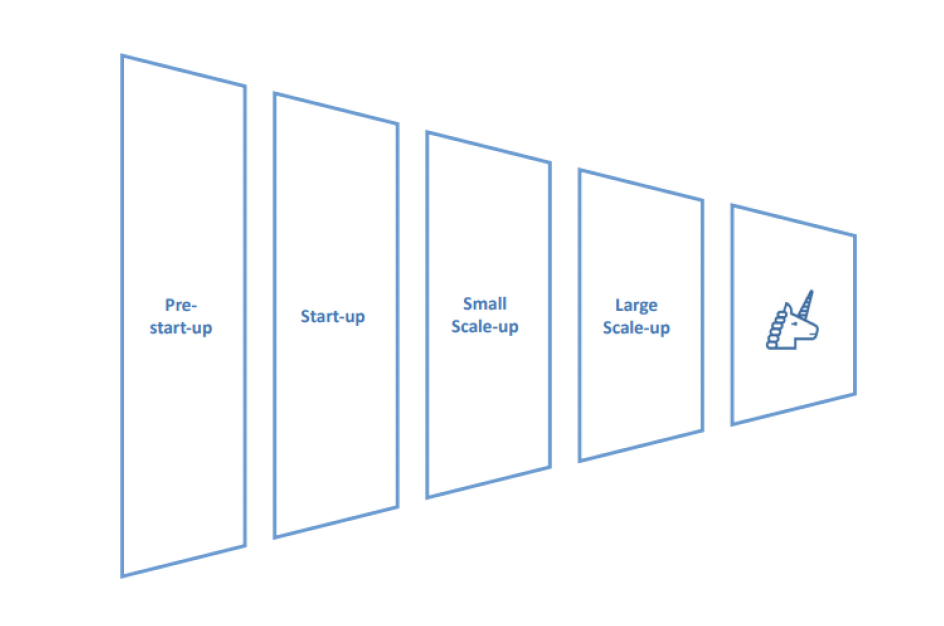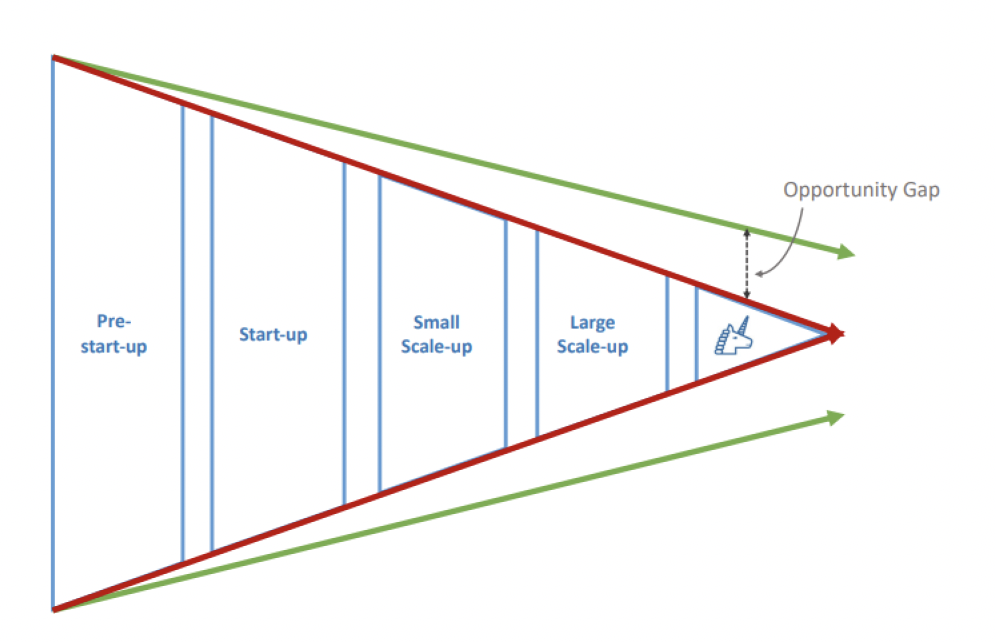Innovation strategy: economic evidence paper
Summary of the theory and selected evidence on the role of innovation and its drivers in generating economic growth and Scotland’s innovation performance to provide context for and inform the development of Scotland’s National Innovation Strategy.
Annex 1: Funnel Model of Innovation
Scotland's innovation funding ecosystem is outlined in a funnel model system by the Scottish Technology Ecosystem Review.[82] This model can be explained visually as a flow between stages of development from pre-start up, to 'unicorn', as shown below.

The model funnels from left to right, with the smaller scale stages later in the process showing that not all start-ups progress to scale-ups, etc. This provides a useful visual tool for understanding that the rate of narrowing between steps of the model influences the number of successful 'unicorns' which emerge.

The funnel model asserts that the difference in the rate of narrowing between each of these steps is a function of how supportive the local ecosystem is for start-ups and scale-ups. If one of these steps or more becomes too narrow, then the funnel model breaks down, and it becomes unlikely that start-ups reach the final stage. Potential reasons for the collapse of the model are:
- There just aren't enough companies to create a sustained learning and experiential environment. This, in turn, means that there aren't enough experienced employees emerging who know how to take a start-up to scale.
- The ecosystem is too small to attract outside talent. The risk is just too great that if a job doesn't work out at a particular company for which an executive relocated her family from London, then there aren't other companies to move to locally, and she has to return home. Few people will relocate their families in the first place, in these circumstances.
- The ecosystem doesn't attract larger investors. Venture Capitalists regard the ecosystem as too small to be worth exploration or they consider it unlikely that the ecosystem is capable of producing viable scale-ups. Consequently, they don't invest or limit their investments. This in turn reduces the number of viable start-ups flowing through the funnel. The gap is partly filled by private individual investors and government, but their limited aggregate capital is unable to fuel the growth of businesses beyond the earliest stages of the funnel.
Contact
Email: Innovation@Gov.Scot
There is a problem
Thanks for your feedback